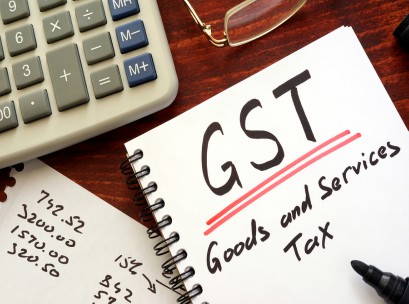Cutting out many indirect taxes from the older taxation system, Goods and Services Tax has taken over the shape of the new tax regime. The GST Act came into effect from July 1st, 2017. The new system is comprehensive and destination-based that allows the taxpayer to know about every detail and insight of the taxpaying procedure. Although, the implementation of the GST was quite the topic of the debate, now as over millions of businesses are registered under the act, it has become handy.
The government is fully backed up with the GST to initially remove the economy-weakening effects of the old tax system and fight corruption with full potential. Making the taxation system destination-based, the government has solidified its surveillance over the movement of the funds and capitals and the goods and services as well.
What does the GST bill contain?
The GST bill contains the well-sorted and planned structure of the collection and distribution of the taxes to the center and the state governments respectively, keeping the federal state of the nation into consideration.
As now the system is destination-based, the government has formed three categories under the new act:
- CGST- Central Goods and Services Tax- Charged for within the state supplies
- SGST- State Goods and Services Tax- Charged for within the state supplies
- IGST- Integrated Goods and Services Tax- Charged for the other state supplies
Despite above-mentioned details, the bill also states that every business with the threshold turnover of RS. 20 lakh, must register under GST. In case the turnover is below the limit of RS. 20 lakh, the person still must register under The GST Act. If not registered then,
- The business will suffer
- Untimely registration will cost fine/penalty
- The returns of the previous year cannot be claimed
- The business has to face the image of a bad tax-payer
The process of GST bill filing according to the India’s GST Bill Details is a bit sophisticated and formal. As the government doesn’t want to invite any loophole in the process, so it has decided to keep the documentation to file for GST returns uptight. When a person files for the GST returns he must keep in mind the basic difference between GSTIN and GSTN. This sometimes creates confusion while the filing process.
Under the GST Act, a person is provided tax registration number, termed as GSTIN. Whereas, GSTN is a network that handles all the IT-related operations taking place in the reference to the GST Act, India.
The documents/details required to file GST return:
- The GSTIN of the business/customer
- Invoice type
- The destination of the supply
- The number of the invoice
- The value of the applicable tax
- The GST rate
- Amount of CGST/SGST/IGST
- Applicable GST cess
- The GST reverse charge, if applicable
- HSN/SAC codes
Generally, these documents/details are required to file GST returns. Besides the above-mentioned information, the person is also required to identify and calculate the amount of business done with the unregistered supplier or receiver of the goods and services.
A person has to file a minimum sum total of 37 returns in a year. It also requires a set of documents to be filled through the year. If a person registers under GST, which he must, then he is supposed to file these below-mentioned forms:
- GSTR1- On 10th of the next month (to file details of all outward supplies of the goods and services by the registered supplier)
- GSTR2- On 15th of the next month (to file details of the inward supply of the goods and services)
- GSTR3- On 20th of the next month (to file monthly return on the basis of overall result of inward and outward supplies)
- GSTR4- On 18th of the next month (to file quarterly return)
- GSTR5- On 20th of the next month (particularly for a non-resident, taxable, and foreign person)
- GSTR6- On 13th of the next month (for taxable input service distributor)
- GSTR7- On 10th of the next month (for authorities deducting tax)
- GSTR8- On 10th of the next month (to file return for supplies influenced by e-commerce site)
- GSTR9- On 31st December of the next financial year (to file annual return)
- GSTR10- For the person whose GST registration was canceled (to be filed within three months after cancellation)
- GSTR11- On 28th of the same month (for the inward supplies)
The GST has taken the nation by storm. The nuances of the new taxation regime play a very important role in the overall maintenance of the system. Every citizen must register under the GST Act to cope with the government, helping in the establishment of a corruption-free nation.



























